Adedotun Akintayo
3D Convolutional Selective Autoencoder For Instability Detection in Combustion Systems
Jan 06, 2021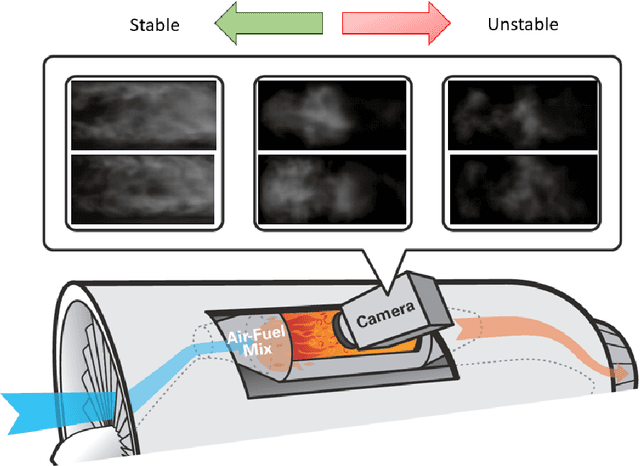
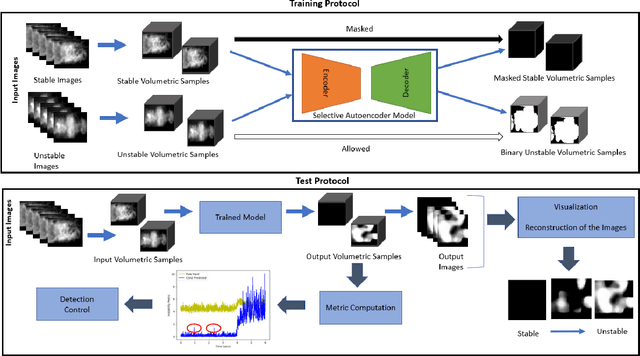
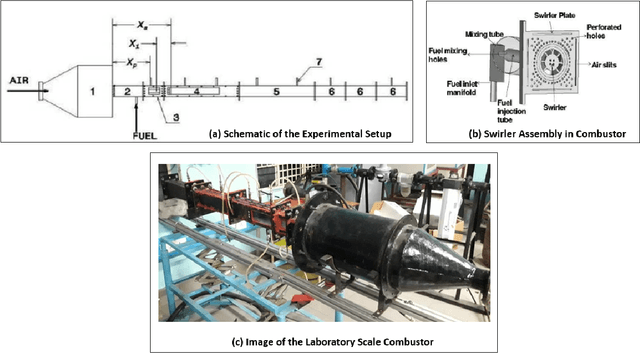
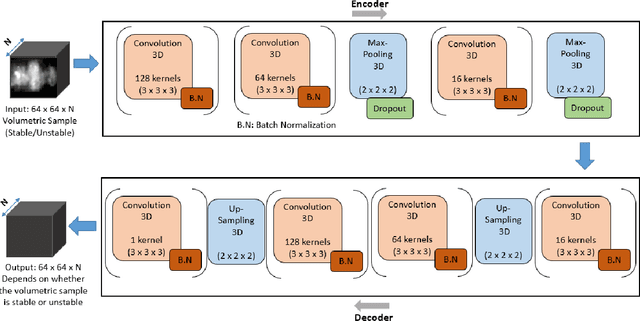
Abstract:While analytical solutions of critical (phase) transitions in physical systems are abundant for simple nonlinear systems, such analysis remains intractable for real-life dynamical systems. A key example of such a physical system is thermoacoustic instability in combustion, where prediction or early detection of an onset of instability is a hard technical challenge, which needs to be addressed to build safer and more energy-efficient gas turbine engines powering aerospace and energy industries. The instabilities arising in combustion chambers of engines are mathematically too complex to model. To address this issue in a data-driven manner instead, we propose a novel deep learning architecture called 3D convolutional selective autoencoder (3D-CSAE) to detect the evolution of self-excited oscillations using spatiotemporal data, i.e., hi-speed videos taken from a swirl-stabilized combustor (laboratory surrogate of gas turbine engine combustor). 3D-CSAE consists of filters to learn, in a hierarchical fashion, the complex visual and dynamic features related to combustion instability. We train the 3D-CSAE on frames of videos obtained from a limited set of operating conditions. We select the 3D-CSAE hyper-parameters that are effective for characterizing hierarchical and multiscale instability structure evolution by utilizing the dynamic information available in the video. The proposed model clearly shows performance improvement in detecting the precursors of instability. The machine learning-driven results are verified with physics-based off-line measures. Advanced active control mechanisms can directly leverage the proposed online detection capability of 3D-CSAE to mitigate the adverse effects of combustion instabilities on the engine operating under various stringent requirements and conditions.
Hierarchical Symbolic Dynamic Filtering of Streaming Non-stationary Time Series Data
Feb 06, 2017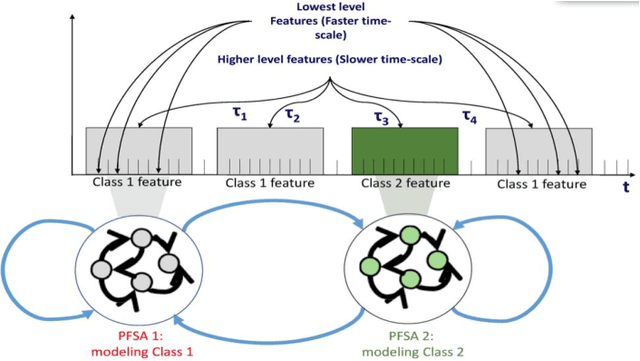
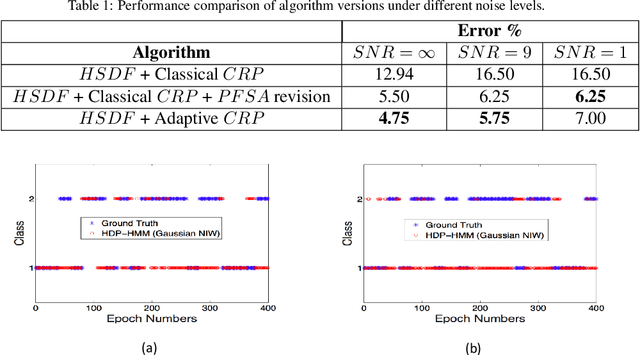
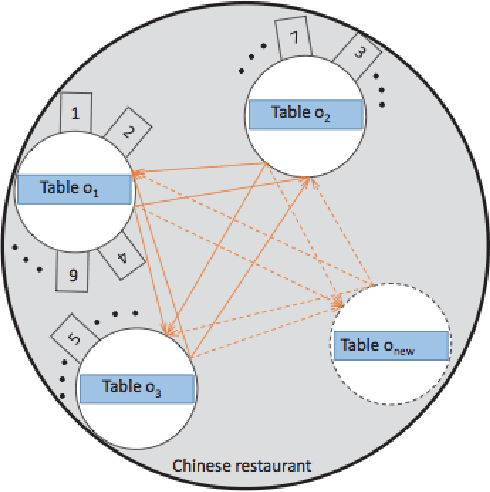

Abstract:This paper proposes a hierarchical feature extractor for non-stationary streaming time series based on the concept of switching observable Markov chain models. The slow time-scale non-stationary behaviors are considered to be a mixture of quasi-stationary fast time-scale segments that are exhibited by complex dynamical systems. The idea is to model each unique stationary characteristic without a priori knowledge (e.g., number of possible unique characteristics) at a lower logical level, and capture the transitions from one low-level model to another at a higher level. In this context, the concepts in the recently developed Symbolic Dynamic Filtering (SDF) is extended, to build an online algorithm suited for handling quasi-stationary data at a lower level and a non-stationary behavior at a higher level without a priori knowledge. A key observation made in this study is that the rate of change of data likelihood seems to be a better indicator of change in data characteristics compared to the traditional methods that mostly consider data likelihood for change detection. The algorithm minimizes model complexity and captures data likelihood. Efficacy demonstration and comparative evaluation of the proposed algorithm are performed using time series data simulated from systems that exhibit nonlinear dynamics. We discuss results that show that the proposed hierarchical SDF algorithm can identify underlying features with significantly high degree of accuracy, even under very noisy conditions. Algorithm is demonstrated to perform better than the baseline Hierarchical Dirichlet Process-Hidden Markov Models (HDP-HMM). The low computational complexity of algorithm makes it suitable for on-board, real time operations.
Energy Prediction using Spatiotemporal Pattern Networks
Feb 03, 2017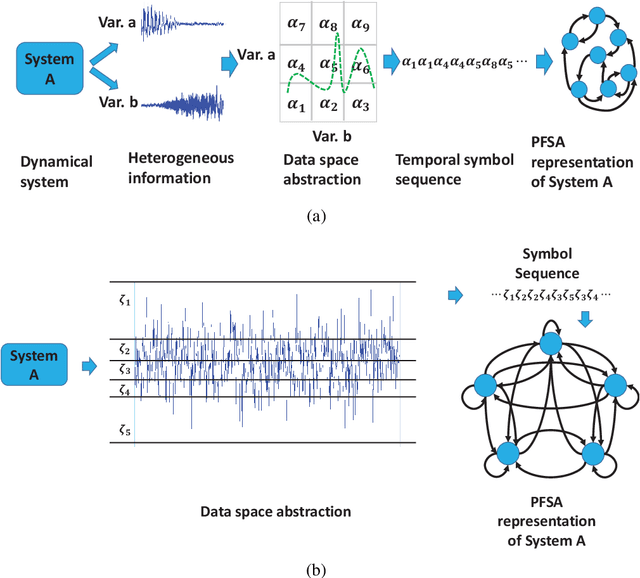

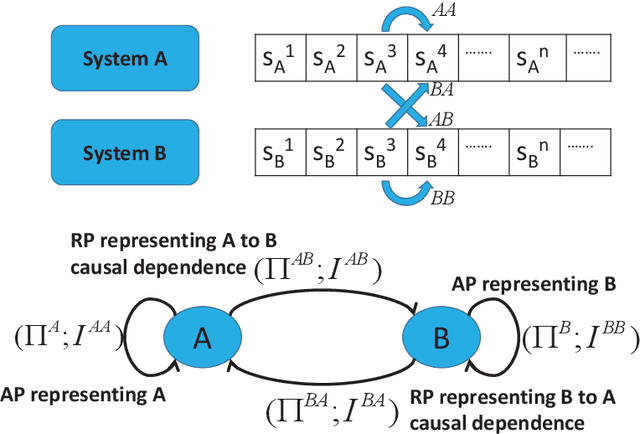
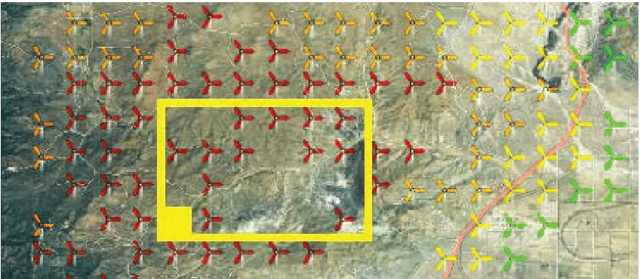
Abstract:This paper presents a novel data-driven technique based on the spatiotemporal pattern network (STPN) for energy/power prediction for complex dynamical systems. Built on symbolic dynamic filtering, the STPN framework is used to capture not only the individual system characteristics but also the pair-wise causal dependencies among different sub-systems. For quantifying the causal dependency, a mutual information based metric is presented. An energy prediction approach is subsequently proposed based on the STPN framework. For validating the proposed scheme, two case studies are presented, one involving wind turbine power prediction (supply side energy) using the Western Wind Integration data set generated by the National Renewable Energy Laboratory (NREL) for identifying the spatiotemporal characteristics, and the other, residential electric energy disaggregation (demand side energy) using the Building America 2010 data set from NREL for exploring the temporal features. In the energy disaggregation context, convex programming techniques beyond the STPN framework are developed and applied to achieve improved disaggregation performance.
A Bayesian Network approach to County-Level Corn Yield Prediction using historical data and expert knowledge
Aug 17, 2016

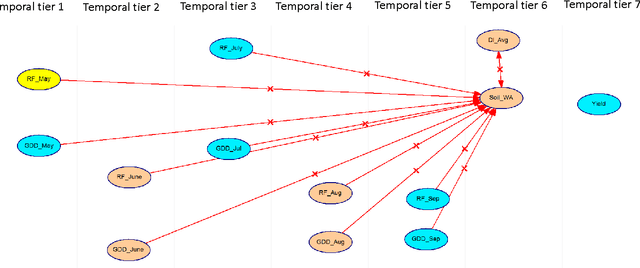
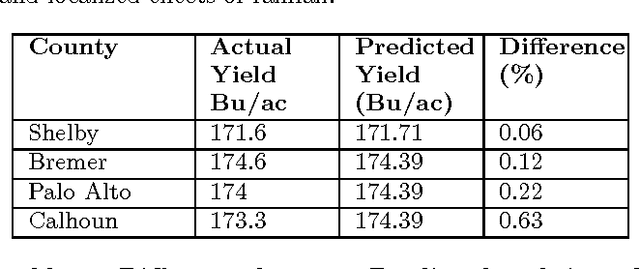
Abstract:Crop yield forecasting is the methodology of predicting crop yields prior to harvest. The availability of accurate yield prediction frameworks have enormous implications from multiple standpoints, including impact on the crop commodity futures markets, formulation of agricultural policy, as well as crop insurance rating. The focus of this work is to construct a corn yield predictor at the county scale. Corn yield (forecasting) depends on a complex, interconnected set of variables that include economic, agricultural, management and meteorological factors. Conventional forecasting is either knowledge-based computer programs (that simulate plant-weather-soil-management interactions) coupled with targeted surveys or statistical model based. The former is limited by the need for painstaking calibration, while the latter is limited to univariate analysis or similar simplifying assumptions that fail to capture the complex interdependencies affecting yield. In this paper, we propose a data-driven approach that is "gray box" i.e. that seamlessly utilizes expert knowledge in constructing a statistical network model for corn yield forecasting. Our multivariate gray box model is developed on Bayesian network analysis to build a Directed Acyclic Graph (DAG) between predictors and yield. Starting from a complete graph connecting various carefully chosen variables and yield, expert knowledge is used to prune or strengthen edges connecting variables. Subsequently the structure (connectivity and edge weights) of the DAG that maximizes the likelihood of observing the training data is identified via optimization. We curated an extensive set of historical data (1948-2012) for each of the 99 counties in Iowa as data to train the model.
LLNet: A Deep Autoencoder Approach to Natural Low-light Image Enhancement
Apr 15, 2016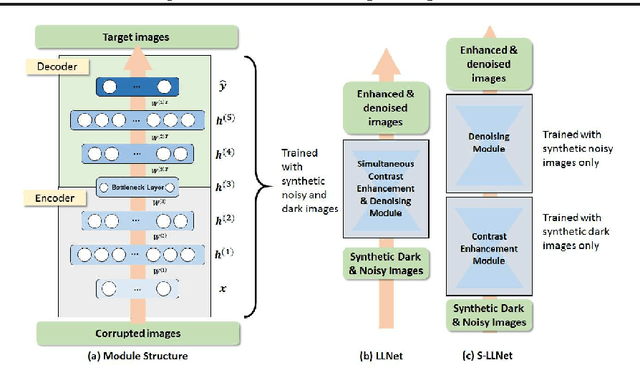
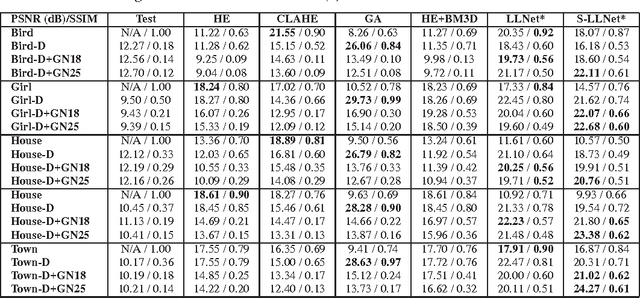
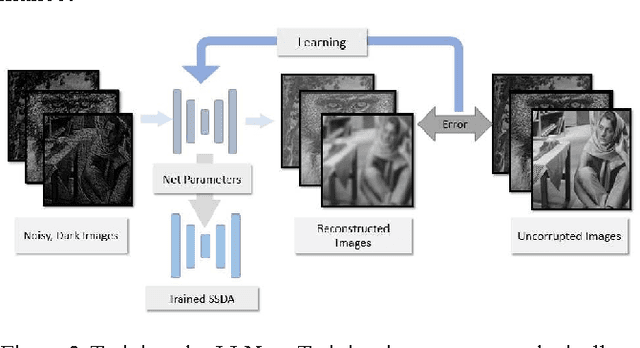

Abstract:In surveillance, monitoring and tactical reconnaissance, gathering the right visual information from a dynamic environment and accurately processing such data are essential ingredients to making informed decisions which determines the success of an operation. Camera sensors are often cost-limited in ability to clearly capture objects without defects from images or videos taken in a poorly-lit environment. The goal in many applications is to enhance the brightness, contrast and reduce noise content of such images in an on-board real-time manner. We propose a deep autoencoder-based approach to identify signal features from low-light images handcrafting and adaptively brighten images without over-amplifying the lighter parts in images (i.e., without saturation of image pixels) in high dynamic range. We show that a variant of the recently proposed stacked-sparse denoising autoencoder can learn to adaptively enhance and denoise from synthetically darkened and noisy training examples. The network can then be successfully applied to naturally low-light environment and/or hardware degraded images. Results show significant credibility of deep learning based approaches both visually and by quantitative comparison with various popular enhancing, state-of-the-art denoising and hybrid enhancing-denoising techniques.
Early Detection of Combustion Instabilities using Deep Convolutional Selective Autoencoders on Hi-speed Flame Video
Mar 25, 2016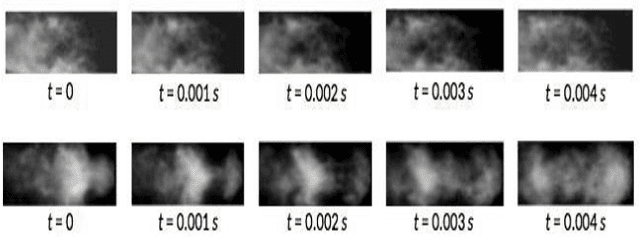

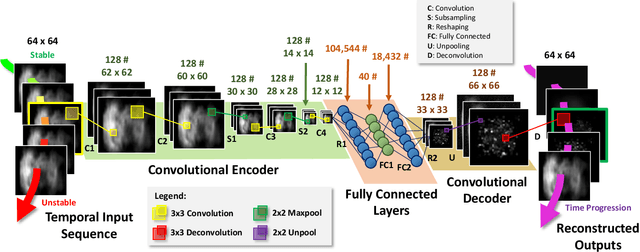
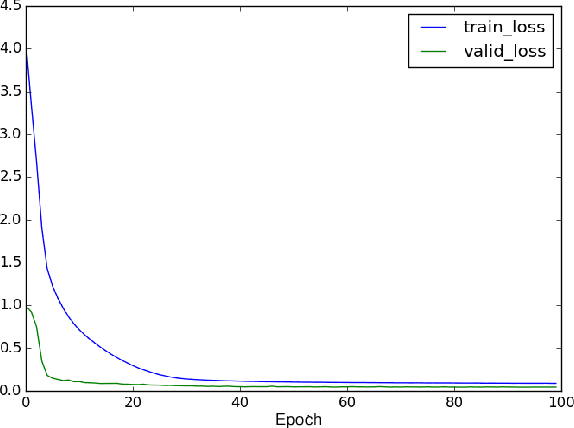
Abstract:This paper proposes an end-to-end convolutional selective autoencoder approach for early detection of combustion instabilities using rapidly arriving flame image frames. The instabilities arising in combustion processes cause significant deterioration and safety issues in various human-engineered systems such as land and air based gas turbine engines. These properties are described as self-sustaining, large amplitude pressure oscillations and show varying spatial scales periodic coherent vortex structure shedding. However, such instability is extremely difficult to detect before a combustion process becomes completely unstable due to its sudden (bifurcation-type) nature. In this context, an autoencoder is trained to selectively mask stable flame and allow unstable flame image frames. In that process, the model learns to identify and extract rich descriptive and explanatory flame shape features. With such a training scheme, the selective autoencoder is shown to be able to detect subtle instability features as a combustion process makes transition from stable to unstable region. As a consequence, the deep learning tool-chain can perform as an early detection framework for combustion instabilities that will have a transformative impact on the safety and performance of modern engines.
An end-to-end convolutional selective autoencoder approach to Soybean Cyst Nematode eggs detection
Mar 25, 2016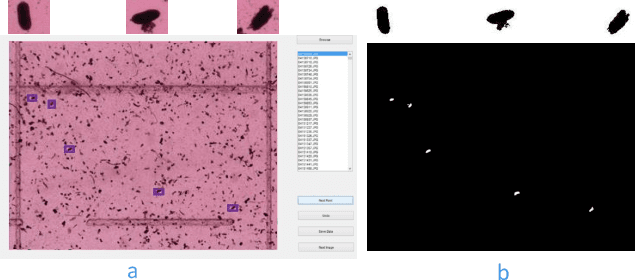

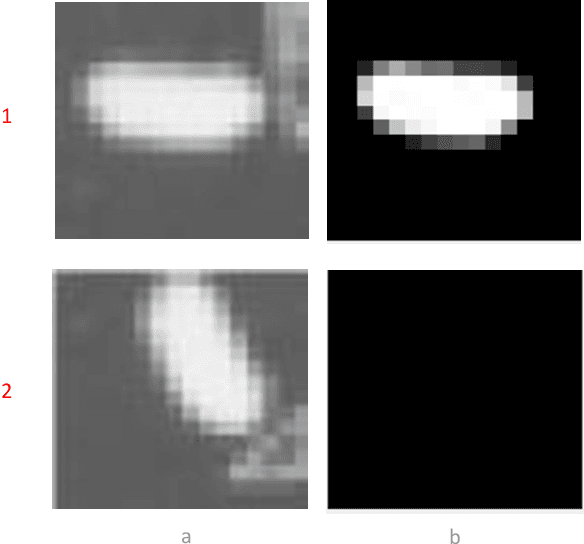
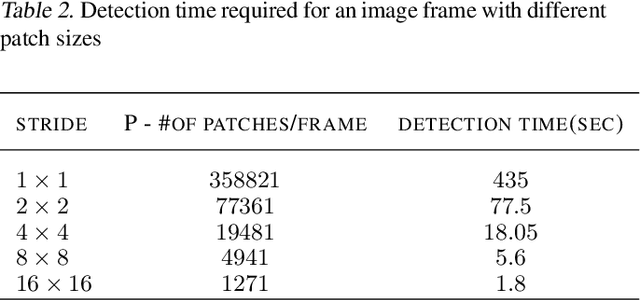
Abstract:This paper proposes a novel selective autoencoder approach within the framework of deep convolutional networks. The crux of the idea is to train a deep convolutional autoencoder to suppress undesired parts of an image frame while allowing the desired parts resulting in efficient object detection. The efficacy of the framework is demonstrated on a critical plant science problem. In the United States, approximately $1 billion is lost per annum due to a nematode infection on soybean plants. Currently, plant-pathologists rely on labor-intensive and time-consuming identification of Soybean Cyst Nematode (SCN) eggs in soil samples via manual microscopy. The proposed framework attempts to significantly expedite the process by using a series of manually labeled microscopic images for training followed by automated high-throughput egg detection. The problem is particularly difficult due to the presence of a large population of non-egg particles (disturbances) in the image frames that are very similar to SCN eggs in shape, pose and illumination. Therefore, the selective autoencoder is trained to learn unique features related to the invariant shapes and sizes of the SCN eggs without handcrafting. After that, a composite non-maximum suppression and differencing is applied at the post-processing stage.
 Add to Chrome
Add to Chrome Add to Firefox
Add to Firefox Add to Edge
Add to Edge